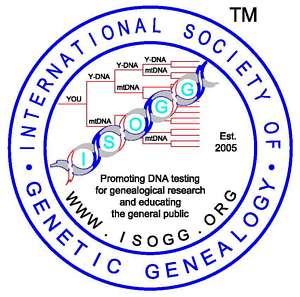Back to Y-DNA Tree Trunk
Back to SNP Index
Back to Papers Cited
Back to Glossary
Copyright 2007, International Society of Genetic Genealogy. All Rights Reserved.

| LINKS: Main Page Y-DNA Tree Trunk SNP Index Papers Cited Glossary |
Corrections/Additions made since 20 December 2006:
| Back to Main Page Back to Y-DNA Tree Trunk Back to SNP Index Back to Papers Cited Back to Glossary Copyright 2007, International Society of Genetic Genealogy. All Rights Reserved. |

|